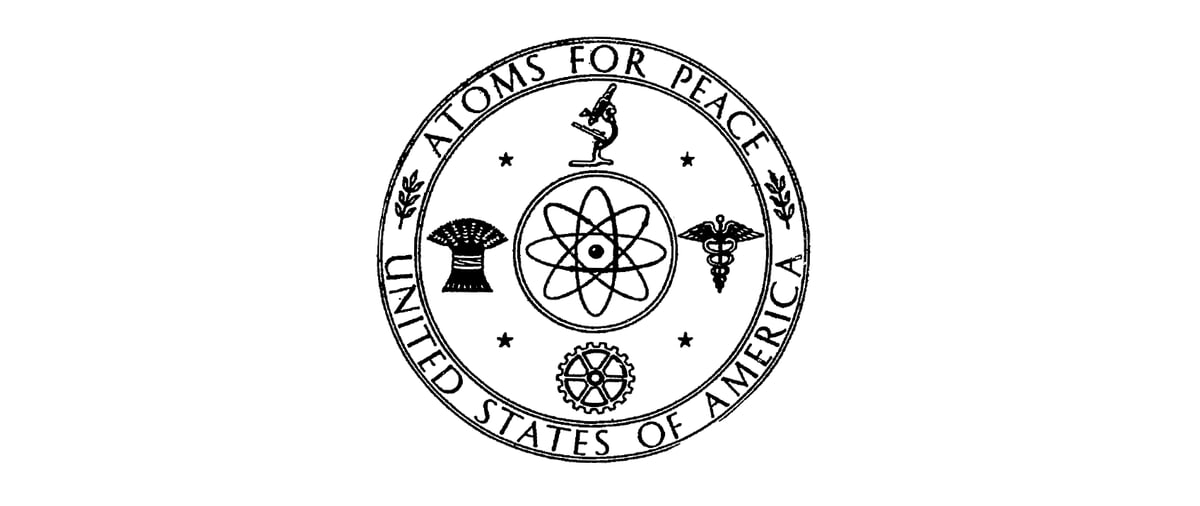Lessons for AI Governance from Atoms for Peace
By Amritanshu Prasad @ 2025-04-16T14:25 (+3)
This is a linkpost to https://www.thenextfrontier.blog/lessons-for-ai-governance-from-atoms-for-peace-introduction/

This is a linkpost to the introductory post in a series of blogposts on my AI-focused blog, The Next Frontier. This series was co-authored with Dr. Sophia Hatz, Associate Professor (Docent) at the Department of Peace and Conflict Research and the Alva Myrdal Centre (AMC) for Nuclear Disarmament, at Uppsala University. She leads the Working Group on International AI Governance within the AMC.
In 1953, amid Cold War tensions and the looming threat of nuclear annihilation, U.S. President Dwight D. Eisenhower proposed a bold idea: harness the power of the atom for peace, not war. In his famous “Atoms for Peace” speech, Eisenhower proposed to prevent the spread of nuclear weapons by promoting peaceful applications of nuclear technology. This initiative laid the groundwork for the institutions, norms, and governance frameworks that continue to shape nuclear policy today.
Seven decades later, the world faces a new transformative technology—advanced Artificial Intelligence (AI). While AI differs from nuclear technology in many ways, its governance poses similarly high stakes. Rapidly advancing AI capabilities could lead to catastrophic outcomes[1], for example via misuse by malicious actors, accelerating arms races and the erosion of human control. Yet, with adequate safeguards in place, advanced AI could drive unprecedented scientific advancements and economic prosperity. Recognizing this, analysts frequently draw on nuclear governance as a model for AI governance, with some proposals[2][3] explicitly drawing on Eisenhower’s framework.
In this two-part series, we take a closer look at "Atoms for Peace" in order to help readers better assess proposals for AI which invoke elements of this framework. Part 1 explores how Atoms for Peace shaped nuclear governance, detailing its logic, successes, and shortcomings. Part 2 identifies key challenges in adapting this framework to advanced AI and suggests a broader approach to AI nonproliferation. We provide a summary of key takeaways below.
Summary
Eisenhower's initiative sought to prevent nuclear Armageddon through a grand bargain: nations would accept international oversight and limitations on weapons development in exchange for access to peaceful nuclear technology and expertise. The U.S. used its significant lead in nuclear technology to make binding commitments toward peaceful use and risk reduction. Simultaneously, Atoms for Peace served as a Cold War strategy, reinforcing U.S. technological leadership while containing Soviet influence. This approach contributed to the creation of institutions such as the International Atomic Energy Agency (IAEA) and helped shape international norms around nuclear cooperation. However, it also had unintended consequences, including the acceleration of nuclear proliferation in some cases and the entrenchment of Cold War divisions.
Several challenges complicate the endeavor of adapting the logic of Atoms for Peace to AI governance. First, establishing a 'grand bargain' – trading access to benefits for restrictions on dangerous uses – is challenging because AI lacks an obvious "weapons-grade" equivalent, and reliably verifying the safety of advanced AI is currently very difficult. Second, intense global competition creates powerful incentives to prioritize rapid development, making it hard for leading nations or developers to credibly commit to prioritizing safety or leverage a technological lead for risk reduction. Finally, attempting to control AI proliferation by restricting access to essential hardware like advanced chips risks repeating Cold War dynamics; such measures could deepen geopolitical divides, potentially provoke an AI arms race, and increase global instability.
We suggest AI governance could benefit from a broader concept of nonproliferation. This concept would move beyond hardware restrictions to focus on preventing dangerous AI capabilities. We examine "if-then commitments" as one example of a capability-focused approach. This approach could help address some identified challenges. The bargain in if-then commitments involves allowing continued AI development unless pre-agreed "capability triggers" are flagged during evaluations. This relies on defining thresholds for potentially dangerous AI capabilities, could enhance the credibility of safety commitments, and may create space for inclusive global cooperation on shared safety standards.
For full text, refer to:
- Lessons for AI Governance from Atoms for Peace, Part 1: Atoms for Peace
- Lessons for AI Governance from Atoms for Peace, Part 2: Chips for Peace?
- ^
Hendrycks, D., Mazeika, M., & Woodside, T. (2023). An Overview of Catastrophic AI Risks (No. arXiv:2306.12001). arXiv. https://doi.org/10.48550/arXiv.2306.12001
- ^
Roberts, P. S. (2019). AI for Peace. War on the Rocks. http://warontherocks.com/2019/12/ai-for-peace/
- ^
O’Keefe, C. (2024). Chips for Peace: How the U.S. and Its Allies Can Lead on Safe and Beneficial AI. Lawfare. https://www.lawfaremedia.org/article/chips-for-peace--how-the-u.s.-and-its-allies-can-lead-on-safe-and-beneficial-ai